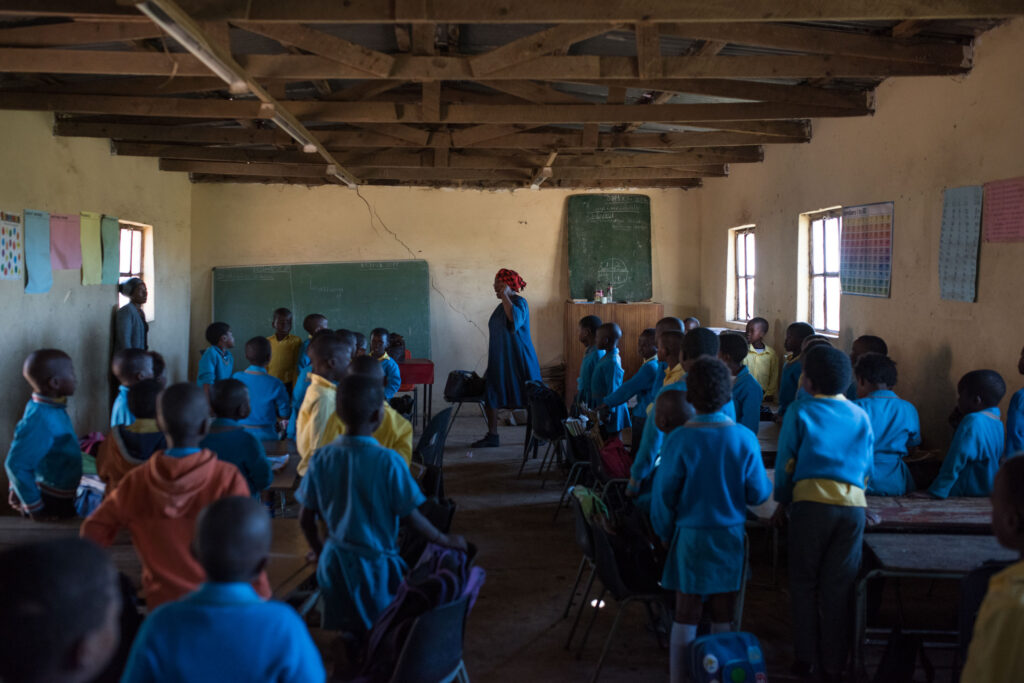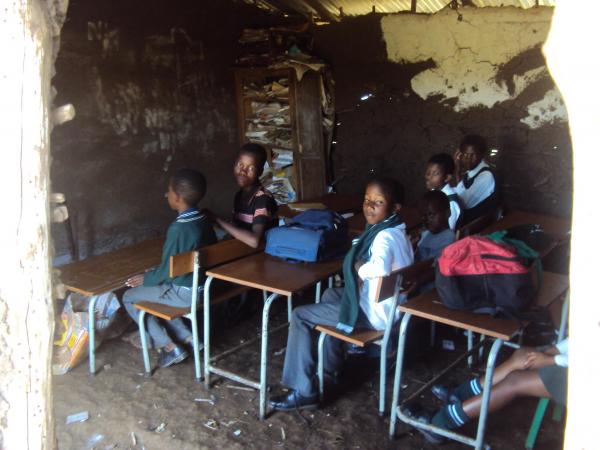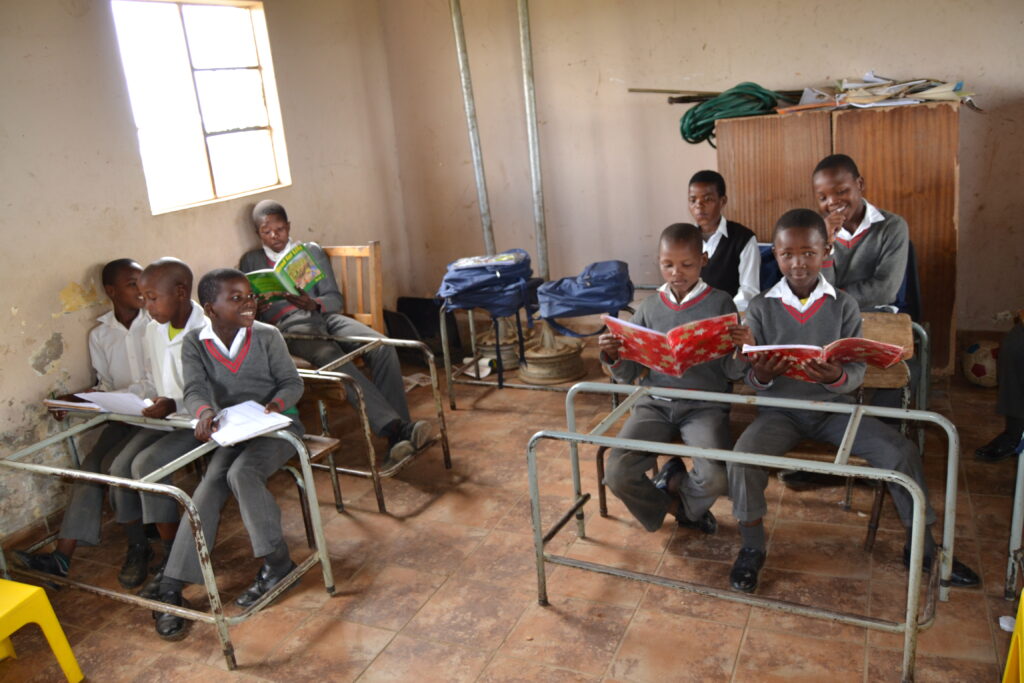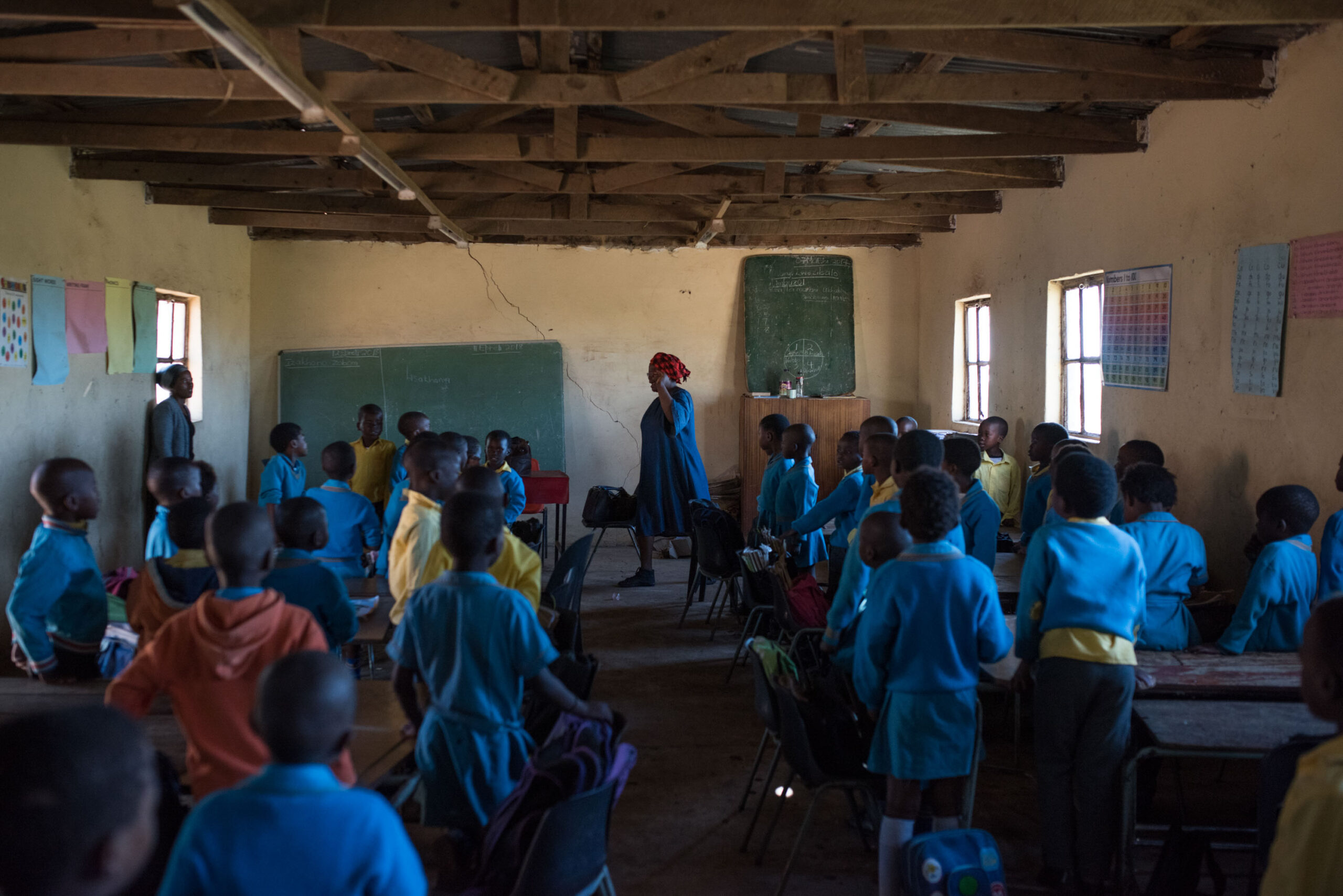Nestled along the southeastern coast of South Africa, the Eastern Cape province is renowned for its picturesque landscapes, including stunning beaches, lush forests, and rolling hills.
Amidst this natural beauty, the province houses an intricate network of educational institutions that cater to learners of all ages and backgrounds.
Education is the cornerstone of societal progress, and it starts within the walls of schools.
The Eastern Cape province in South Africa is home to a diverse range of schools, each playing a pivotal role in shaping the young minds of tomorrow.
From urban centers to rural communities, these schools form the bedrock of education in the region, striving to provide quality learning experiences that prepare students for a dynamic and competitive world.

2. Historical Evolution of Education
Colonial Era Educational Initiatives
The history of education in the Eastern Cape dates back to the colonial era when missionaries established schools to impart Western knowledge to local communities.
These early institutions laid the foundation for formal education in the province.
Apartheid’s Impact on Education
The oppressive apartheid regime brought significant challenges to education in the Eastern Cape.
Segregation and limited resources for non-white communities led to stark inequalities in educational opportunities.
What is the main group of Eastern Cape?
The main group of the Eastern Cape is the Xhosa people.
They are the largest ethnic group in South Africa, and they make up about 78% of the population of the Eastern Cape.
The Xhosa are a Bantu-speaking people, and their language is isiXhosa.
They are traditionally cattle herders and farmers, and their culture is rich in tradition and history.
The Xhosa people have a long and proud history.
They were one of the first groups to resist European colonization, and they fought a number of wars against the British.
The Xhosa also played a major role in the struggle against apartheid.
Today, the Xhosa people are a vibrant and dynamic community.
They are making significant contributions to South Africa in all areas of life, including politics, business, education, and the arts.
Here are some of the other major groups in the Eastern Cape:
- The Mfengu are a Bantu-speaking people who migrated to the Eastern Cape from Natal in the 19th century. They are known for their bravery and fighting skills.
- The Thembu are Bantu-speaking people who are closely related to the Xhosa. They are known for their cattle herding and their traditional dance
- The Khoisan are the indigenous people of South Africa. They are divided into two main groups, the San and the Khoikhoi. The San are hunter-gatherers, while the Khoikhoi are cattle herders.
- Coloured people are a mixed-race group who are descended from Europeans, Africans, and Asians. They are the largest minority group in South Africa.
- The White people are a minority group in South Africa. They are mostly of European descent.
The Eastern Cape is a diverse and multicultural province.
The people of the Eastern Cape are proud of their heritage and their culture, and they are working together to build a better future for their province.
Which province has the most schools in South Africa?
As of 2022, KwaZulu-Natal has the most schools in South Africa, with a total of 6,021 schools.
This is followed by the Eastern Cape with 5,311 schools, Limpopo with 3,847 schools, Gauteng with 3,761 schools, and the Western Cape with 2,966 schools.
The other provinces have fewer schools: Mpumalanga has 2,294 schools, North West has 2,241 schools, Free State has 1,891 schools, and Northern Cape has 1,249 schools.
The number of schools in each province varies for a number of reasons, including the population size, the level of urbanization, and the availability of resources.
KwaZulu-Natal is the most populous province in South Africa, and it also has a high level of urbanization.
This means that there is a large demand for schools in the province.
Limpopo and Gauteng are also populous provinces, and they have a high level of urbanization.
However, they have fewer schools than KwaZulu-Natal because they have more resources available.
The Western Cape is the most affluent province in South Africa, and it has a high level of urbanization.
However, it has fewer schools than KwaZulu-Natal because it has a smaller population.
The number of schools in each province is also affected by the availability of resources. KwaZulu-Natal has a large number of schools because it has a large population and a high level of urbanization.
However, it also has a shortage of resources, which means that the quality of education in the province is not as good as it could be.
Limpopo and Gauteng also have a shortage of resources, but they have more resources than KwaZulu-Natal.
This means that the quality of education in these provinces is better than in KwaZulu-Natal.
The Western Cape has the most resources available, and it has the best quality of education in South Africa.
The government is working to improve the quality of education in all provinces, but there is still a long way to go.
Some of the initiatives that are being implemented include:
- The construction of new schools and the upgrading of existing schools.The provision of financial assistance to learners from poor families.The implementation of programs to improve literacy and numeracy skills.The development of early childhood development programs.The provision of support to teachers, such as professional development opportunities.
With continued investment and support, the quality of education in all provinces can be improved.
Modern Education System

In the Eastern Cape province of South Africa, the modern education system has evolved significantly to meet the diverse needs and aspirations of its learners.
This section highlights the different stages of education—primary, secondary, and tertiary—within the province and sheds light on the approaches used to foster academic growth, critical thinking, and holistic development.
Primary Education: Nurturing Foundations
Primary schools in the Eastern Cape play a crucial role in instilling basic literacy and numeracy skills.
Dedicated educators employ interactive teaching methods to engage young learners.
Primary education serves as the cornerstone of a student’s educational journey.
In the Eastern Cape, primary schools play a crucial role in nurturing the intellectual and emotional development of young learners.
Educators at this level focus not only on imparting foundational skills in literacy and numeracy but also on fostering a love for learning.
Interactive and student-centered teaching methods are employed to engage curious young minds.
These methods include group activities, project-based learning, and hands-on experiences that encourage active participation.
By making learning enjoyable and relatable, primary education in the Eastern Cape sets the stage for a lifelong pursuit of knowledge.
Secondary Education: Preparing for the Future
Secondary education equips students with the knowledge and skills necessary for higher education or the workforce.
Specialized schools focus on areas like science, arts, and technical subjects.
As students transition from primary to secondary education, the focus shifts towards equipping them with the knowledge and skills necessary for future success.
Secondary schools offer a comprehensive curriculum that encompasses a wide range of subjects, from sciences and mathematics to arts and humanities.
One notable feature of the Eastern Cape’s secondary education system is the presence of specialized schools that cater to specific areas of interest.
These schools provide intensive training in fields like science, technology, engineering, arts, and sports.
This specialized approach not only prepares students for higher education but also offers them an opportunity to excel in their chosen domains.
Tertiary Education: Pathways to Excellence
The province is home to esteemed universities and colleges that offer a wide range of disciplines. Institutions like Rhodes University and Nelson Mandela University contribute to the academic growth of the region.
Tertiary education in the Eastern Cape is marked by the presence of esteemed universities and colleges that offer a diverse array of disciplines.
Institutions like Rhodes University and Nelson Mandela University provide students with a platform to explore their academic passions and pursue advanced studies.
Tertiary education is characterized by a commitment to research, innovation, and academic rigor.
Students are exposed to a dynamic learning environment where critical thinking, problem-solving, and creativity are nurtured.
The Eastern Cape’s universities are also known for their engagement with local communities, addressing societal challenges through research and community-based projects.
Challenges and Progress

The modern education system in the Eastern Cape is not without its challenges.
Socioeconomic disparities, language diversity, and resource limitations continue to impact the quality of education.
However, the province has shown commendable progress in addressing these challenges through innovative strategies and collaborative efforts.
Socioeconomic Disparities and Access
Socioeconomic disparities remain a significant challenge, affecting access to quality education.
Efforts are being made to bridge this gap through scholarships and community-based initiatives.
One of the foremost challenges in the Eastern Cape’s education system is the uneven distribution of resources and opportunities.
Many learners in underprivileged areas face barriers to accessing quality education.
To address this issue, various initiatives have been launched to provide scholarships, bursaries, and mentorship programs that empower disadvantaged students to pursue their educational dreams.
Language and Cultural Diversity
The Eastern Cape is a melting pot of languages and cultures.
Incorporating diverse linguistic and cultural perspectives into education enriches the learning experience.
The Eastern Cape is a microcosm of linguistic and cultural diversity, with communities speaking a multitude of languages.
While this diversity is a strength, it can also present challenges in education.
Efforts have been made to incorporate multiple languages into the curriculum, ensuring that learners can access education in their mother tongue while still becoming proficient in English, which is the medium of instruction.
Infrastructure and Resource Limitations
Limited infrastructure and resources present obstacles to effective learning.
Collaborations between government bodies and private enterprises are gradually improving the situation.
In some parts of the Eastern Cape, schools face infrastructural and resource limitations.
This can hinder effective teaching and learning.
To overcome this challenge, collaborations between government agencies, private enterprises, and non-profit organizations have been instrumental in improving school infrastructure, providing technology resources, and enhancing the overall learning environment.
In conclusion, the modern education system in the Eastern Cape province of South Africa is a dynamic blend of nurturing foundations, preparing for the future, and paving pathways to excellence.
Despite challenges, the province’s commitment to innovation and inclusivity reflects its determination to provide quality education for all.
By embracing its rich cultural diversity and harnessing the potential of its learners, the Eastern Cape is shaping a brighter future for generations to come.
Innovations in Education
In the ever-evolving landscape of education, the Eastern Cape is not lagging behind when it comes to embracing innovative approaches that enhance the learning experience.
This section sheds light on some of the notable innovations in education within the province.
Technological Integration in Classrooms
Incorporating technology into classrooms enhances the learning process. Interactive apps and online resources make learning more engaging and accessible.
The integration of technology has revolutionized the way education is imparted in the Eastern Cape.
Classrooms are no longer confined to traditional textbooks and chalkboards. Instead, interactive whiteboards, tablets, and educational apps have become integral tools for both educators and students.
Technological integration serves a dual purpose: it makes learning more engaging and accessible.
Interactive apps allow students to visualize complex concepts, conduct virtual experiments, and engage with educational content in a dynamic manner.
This shift towards technology-enabled learning not only prepares students for the digital age but also taps into their innate curiosity and enthusiasm for exploration.
Community Engagement and Learning
Engaging the local community in the educational process fosters a sense of ownership.
Community partnerships create opportunities for real-world learning experiences.
The Eastern Cape’s education system recognizes the value of real-world experiences in fostering holistic development.
This recognition has led to a surge in community engagement initiatives that bridge the gap between classroom learning and practical application.
Collaborations between schools and local communities are increasingly common.
Students are encouraged to undertake projects that address real issues faced by their communities.
This approach not only enhances their problem-solving skills but also instills a sense of social responsibility.
Whether it’s partnering with local businesses for internships or organizing community clean-up drives, these initiatives create well-rounded individuals who are prepared to contribute meaningfully to society.
The Role of Educators
Central to the success of the Eastern Cape’s education system are the educators who passionately dedicate themselves to shaping the minds of the next generation.
Their role extends far beyond disseminating information; they serve as mentors, guides, and inspirations.
Inspiring a Love for Learning
Dedicated teachers kindle students’ curiosity, inspiring a lifelong love for learning.
Their passion and commitment shape the educational journey.
Educators in the Eastern Cape understand that instilling a genuine love for learning is the key to unlocking a student’s full potential.
Through creative teaching methods, such as storytelling, interactive demonstrations, and experiential learning, teachers capture their students’ imagination and curiosity.
By making learning enjoyable, they nurture a lifelong appetite for knowledge.
Fostering Critical Thinking
Educators prioritize critical thinking skills, encouraging students to analyze and question information.
This empowers learners to become independent thinkers.
In an era where information is easily accessible, educators in the Eastern Cape recognize the importance of cultivating critical thinking skills.
They encourage students to question, analyze, and evaluate information rather than simply accepting it at face value.
This approach empowers students to become independent thinkers who are equipped to navigate the complexities of the modern world.
Extracurricular Activities
Education in the Eastern Cape goes beyond textbooks and classrooms.
Extracurricular activities play a vital role in shaping well-rounded individuals who are not only academically proficient but also socially and emotionally competent.
Sports, Arts, and Holistic Development
Extracurricular activities play a vital role in holistic development. Sports, arts, and clubs cultivate teamwork, creativity, and leadership skills.
Extracurricular activities, such as sports, arts, and cultural clubs, are celebrated in the Eastern Cape’s education system.
These activities provide a platform for students to explore their talents, cultivate teamwork, and develop leadership skills.
Whether it’s participating in a soccer match, joining a drama club, or showcasing artistic skills, these activities contribute to holistic development and a well-balanced education.
In the next sections, we’ll delve into the importance of parental involvement in education and the exciting prospects that lie ahead for the future of Eastern Cape education.
Stay tuned for more insights!
Parental Involvement
Education in the Eastern Cape thrives on the principle that learning is a collaborative effort involving not only educators and students but also parents and guardians.
The active participation of parents in their children’s educational journey is a cornerstone of the province’s approach to holistic learning.
Nurturing a Supportive Learning Environment
Parental involvement significantly impacts a child’s education.
Supportive families create an environment where learning thrives.
Parental involvement goes beyond attending parent-teacher meetings; it encompasses creating a supportive and conducive learning environment at home.
Parents are encouraged to engage in open communication with their children about their educational experiences, challenges, and aspirations.
Studies have shown that students whose parents are actively engaged in their education are more likely to excel academically and develop positive attitudes towards learning.
By fostering a sense of partnership between home and school, the Eastern Cape’s education system aims to create a seamless and enriching learning experience for students.
The Future of Eastern Cape Education
The Eastern Cape’s education system stands at the precipice of transformation and progress.
As challenges are acknowledged and innovative solutions are embraced, the province’s commitment to quality education for all remains unwavering.
Addressing Challenges and Seizing Opportunities
The Eastern Cape’s education system faces challenges, but promising initiatives are shaping its future. Collaborative efforts and innovative solutions pave the way for positive change.
The future of Eastern Cape education involves a multi-pronged approach to addressing challenges.
Efforts to bridge socioeconomic disparities, incorporate cultural diversity, and enhance infrastructure are ongoing.
The province’s determination to provide equal educational opportunities to all learners is reflected in initiatives that prioritize inclusivity and excellence.
Furthermore, partnerships between educational institutions, government bodies, NGOs, and the private sector are playing a pivotal role in shaping the future of education in the Eastern Cape.
Collaborative efforts are not only addressing existing challenges but also uncovering exciting opportunities for innovation and growth.
In conclusion, the Eastern Cape’s education system is a dynamic tapestry of innovation, collaboration, and determination.
As the province continues to pave the way for a brighter future, it does so with a steadfast commitment to nurturing well-rounded individuals who are equipped to contribute meaningfully to their communities and the world at large.
How many schools are in the Eastern Cape?
There are a total of 6064 schools in the Eastern Cape province of South Africa.
These schools are spread across 254 cities and towns in the province.
The majority of these schools are public schools, with 5046 schools.
There are also 1018 independent schools in the Eastern Cape.
The Eastern Cape is the second most populous province in South Africa, with a population of over 7 million people.
The majority of the population in the Eastern Cape is Black African, followed by Coloured and White.
The official languages of the Eastern Cape are English, Afrikaans, and isiXhosa.
The Eastern Cape is a rural province, with most of the population living in small towns and villages.
The province is home to some of South Africa’s most important historical sites, including the Nelson Mandela Museum in Qunu and the Robben Island Prison.
The education system in the Eastern Cape is facing a number of challenges, including a shortage of teachers, poor infrastructure, and high rates of poverty and unemployment.
However, the government is working to improve the quality of education in the province, and there have been some positive developments in recent years.
How to check if the school is registered with the Department of Education in South Africa?
There are a few ways to check if a school is registered with the Department of Education in South Africa.
- Contact the school directly. The school should be able to provide you with a copy of their registration certificate.
- Check the Department of Education’s website. The Department of Education has a list of all registered schools on their website. You can search for the school by name or by location.
- Call the Department of Education’s call center. The Department of Education’s call center can also provide you with information about the registration status of a school. The call center number is 0800 8722 22.
Here are the steps on how to check the registration status of a school on the Department of Education’s website:
- Go to the Department of Education’s website: https://www.education.gov.za/
- Click on the “Schools” tab.
- Click on the “Find a School” button.
- Enter the name of the school or the school’s registration number in the search bar.
- Click on the “Search” button.
If the school is registered, the website will display the school’s registration number, name, address, and contact information. If the school is not registered, the website will display a message stating that the school is not registered.
What is a EMIS number for schools?
An EMIS number is a unique identifier assigned to every school in South Africa by the Department of Education. It is used to track and manage information about the school, such as its enrollment, staff, and facilities.
The EMIS number is a 10-digit number that is divided into two parts:
- The first 6 digits are the school’s registration number.
- The last 4 digits are a unique identifier assigned by the Department of Education.
The EMIS number is used for a variety of purposes, including:
- Tracking school enrollment
- Managing school finances
- Planning and budgeting for education
- Conducting research on education
- Providing educational services to schools
If you are looking for information about a specific school, you can often find the school’s EMIS number on the school’s website or by contacting the school directly.
Here are some of the benefits of using EMIS numbers:
- They provide a unique identifier for each school, which makes it easier to track and manage information about the school.
- They can be used to collect and analyze data about schools, which can be used to improve the quality of education.
- They can be used to target resources to schools that need them most.
- They can be used to improve accountability for schools.
What is the most expensive school in the Eastern Cape?
The most expensive school in the Eastern Cape is St Andrew’s College, which is located in Makhanda (formerly known as Grahamstown).
The annual tuition and boarding fees for 2023 are R320,064.
St Andrew’s College is a private, all-boys boarding school that was founded in 1866.
The school is known for its academic excellence, its strong sporting tradition, and its commitment to providing a holistic education.
The school has a student body of about 800 boys from all over South Africa and the world.
The school’s facilities include a boarding house, a sports complex, a library, and a number of academic buildings.
St Andrew’s College is a highly selective school, and only the top students are admitted.
The school’s alumni include a number of prominent South Africans, including former President Nelson Mandela.
Here are the other most expensive schools in the Eastern Cape:
- Grey College, Port Elizabeth: R297,800
- Queens College, Queenstown: R295,000
- Selborne College, East London: R290,000
- Collegiate Girls’ High School, Port Elizabeth: R285,000
- Pearson High School, East London: R280,000
It is important to note that the cost of education at these schools can vary depending on a number of factors, such as the grade level, the boarding option, and the extracurricular activities that are chosen.
Conclusion
Eastern Cape schools stand as a testament to the resilience and determination of a province striving for educational excellence.
From humble beginnings to a future laden with possibilities, the journey of Eastern Cape learners reflects the vibrancy and diversity of South Africa itself.
FAQs
- Are there bilingual schools in the Eastern Cape?
- Yes, many schools in the Eastern Cape offer bilingual education to cater to the region’s linguistic diversity.
- How does the government support education in the province?
- The government provides funding and resources to schools, particularly those in underprivileged areas, to enhance access to quality education.
- What role do NGOs play in Eastern Cape education?
- Non-governmental organizations collaborate with schools to provide additional support, resources, and educational programs.
- Are there opportunities for international students to study in the Eastern Cape?
- Yes, some universities in the Eastern Cape offer programs for international students, contributing to cultural diversity on campuses.
- How do Eastern Cape schools celebrate their cultural heritage?
- Schools often hold cultural events, performances, and exhibitions that celebrate the diverse heritage of the province.
In conclusion, Eastern Cape schools are a mosaic of history, culture, challenges, and triumphs.
The education sector in this province is on a journey of evolution, aiming to provide every learner with a meaningful and impactful educational experience.
As South Africa’s Eastern Cape continues to make strides in education, it does so with a commitment to fostering a brighter future for generations to come.

